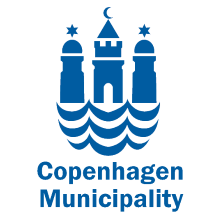The Copenhagen neighborhood of Østerbro adapts the city to extreme weather using affordable green infrastructure that also improves quality of life for citizens.
Copenhagen has learned that large-scale grey infrastructure renovations are not always the best response to climate change. Instead, faced with increasing rates of flooding, the Danish capital created the world’s first climate-resilient district – Østerbro Climate Quarter – by implementing green infrastructure. This concept is cheaper to implement and maintain than expanding sewers, and it reduces the financial impact of extreme weather events.
Should a storm-related flood hit the area, the integrated system of green streets and pocket parks will serve as retention areas and water basins. Local hills will function as the sides of a bowl, funneling water to designated retention areas. Public squares will even be able to collect water from surrounding buildings’ roofs and distribute the water locally, thanks to a new pipe system. When completed, 30% of rainwater is expected to be managed this way, instead of ending up in the sewer system. In total, 50,000 square meters of cityscape will become climate-resilient, natural urban infrastructure.
20% of neighborhood surfaces are to become green.

The challenge
A single cloudburst in July 2011 caused over $1 billion in damage to Copenhagen, according to the city’s Technical and Environmental Administration. Faced with the reality that these events will become more frequent in the coming years, the city is taking serious precautions to prepare itself. The Østerbro Climate Quarter’s resilience demonstrates that adaptation measures not only protect citizens and infrastructure but also contribute to a more enjoyable and livable city.
Co-benefits
Economic The green and surface-based climate adaptations of the Østerbro Climate Quarter will reduce the cost of damage from cloudbursts and are cheaper to implement than sewer expansions.
Environmental Creating greener infrastructure can improve air quality, sequester CO2, and improve local biodiversity.
Social More than 10,000 people have taken part in the project’s 170 citizen-led initiatives to create green surfaces, usable urban spaces, and a climate-prepared neighborhood.
About Copenhagen
Copenhagen is the capital and most populous city of Denmark. The city has a population of 763,908 (as of December 2016), of whom 601,448 live in the Municipality of Copenhagen. Copenhagen is situated on the eastern coast of the island of Zealand; another small portion of the city is located on Amager, and is separated from Malmö, Sweden, by the strait of Øresund. Originally a Viking fishing village founded in the 10th century, Copenhagen became the capital of Denmark in the early 15th century. Since the turn of the 21st century, Copenhagen has seen strong urban and cultural development, facilitated by investment in its institutions and infrastructure. Copenhagen’s economy has seen rapid developments in the service sector, especially through initiatives in information technology, pharmaceuticals and clean technology.


